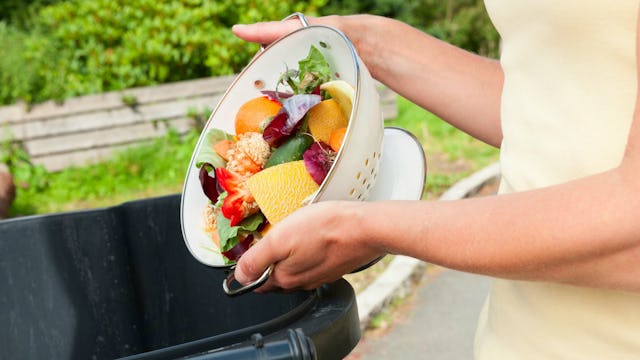My Fellow Americans: We Waste Way Too Much Food

According to a recently published report in The Guardian, roughly half of the produce in the United States is thrown away. That’s roughly 66 million tons, or $160 billion worth of produce annually. In addition, the EPA states that “discarded food is the biggest single component of landfill and incinerators.”
Let’s take a moment and think about those numbers because they are huge, particularly when you consider food scarcity and starvation issues worldwide, along with food insecurity issues here in the U.S.
So what’s the deal? Well, it goes far beyond your children sticking their nose up to that beautifully made casserole you carefully photographed and posted on Instagram. According to The Atlantic’s Adam Chandler, one major cause is that food is less expensive in the U.S. than anywhere else on the globe. This has made Americans feel that it’s more acceptable to waste food.
There’s also the fact that Americans have grown accustomed to a particular aesthetic when it comes to food, particularly produce. Chandler writes, “Fruits and vegetables, in addition to generally being healthful, have a tendency to bruise, brown, wilt, oxidize, ding, or discolor and that is apparently something American shoppers will not abide.”
I am as guilty as the next person when it comes to high standards in the produce section. When I go shopping, regardless of the store, I expect my fruit to be bright in color and blemish-free. And even then I dig through each stack of fruit, gripping or pinching, to find just the right avocado or apple in size, color, and touch. Everyone around me does the same. There is something satisfying about finding the perfect melon for your family, even though my children will fight with me about eating it.
The crazy thing is, I’ve become some so accustomed to these high expectations as I shop that I never really thought about the impact it could be having on food production and waste in our country. Not that I want to make this a moral thing, but the reality is, I, along with most Americans, have incredibly high standards when it comes to food, and those expectations are filling landfills rapidly.
Grocery store owners know this. Writing about food waste for The Atlantic back in 2014, Elizabeth Segran gestured at both the shoppers who refuse to purchase less than immaculate fruit as well as the grocers who refuse to stock the shelves with anything other than the best. “Grocery stores routinely trash produce for being the wrong shape or containing minor blemishes,” Doug Rauch, the former president of the Trader Joe’s Company, told Segran.
And it’s not only the grocers. According to The Guardian report, to meet the standards of American shoppers, it has become the norm for vast quantities of fruits to be left to rot in the fields, at the stores, or in our kitchens because they showed the slightest sign of imperfection.
If you don’t find this troubling, you should. America, along with most European countries, has a reputation of being wasteful, and this is obviously a prime example. The situation is only getting worse with the relatively recent trend of posting pictures of food on social media. If you question Americans’ obsession with food perfection, take a moment and scroll through Instagram, Twitter, Facebook, and you are sure to find a picture of someone’s curated meal.
Going back to The Atlantic, Chandler found that the Obama administration recognized the problem of wasted food on a national level. They introduced a campaign in 2015 to cut by half the 2 million-plus calories that Americans waste per year by 2030. The plan is to promote improved food efficiency, recycling, decoding food labels, and finding ways to deliver food to the 1 in 6 Americans who are hungry.
Yes, 1 in 6 American people are food insecure, and we can’t stop throwing away good, healthy food because it doesn’t look perfect.
As an individual, there are a few things you can do to offset this trend, particularly if it bothers you, which really, it should. The first, and probably simplest, is to widen your standards when it comes to what you view as acceptable produce. A simple bruise or blemish doesn’t mean that a piece of fruit belongs in the garbage. It’s not going to hurt you. The nutrition benefits are the same.
As a parent, you can also work with your children to change their standards when it comes to acceptable food. As a father of three, I do understand that this might be one of the most difficult efforts, particularly for those of you with young children. My 10-year-old often looks at the food we serve as if it were a long, dark, terrifying cave, regardless of how fresh it is. But if we can begin to change the culture of food aesthetics in our own homes, we can begin to change how food is viewed for the next generation.
Let’s set a good example for our kids, so we can help curb this massive problem.